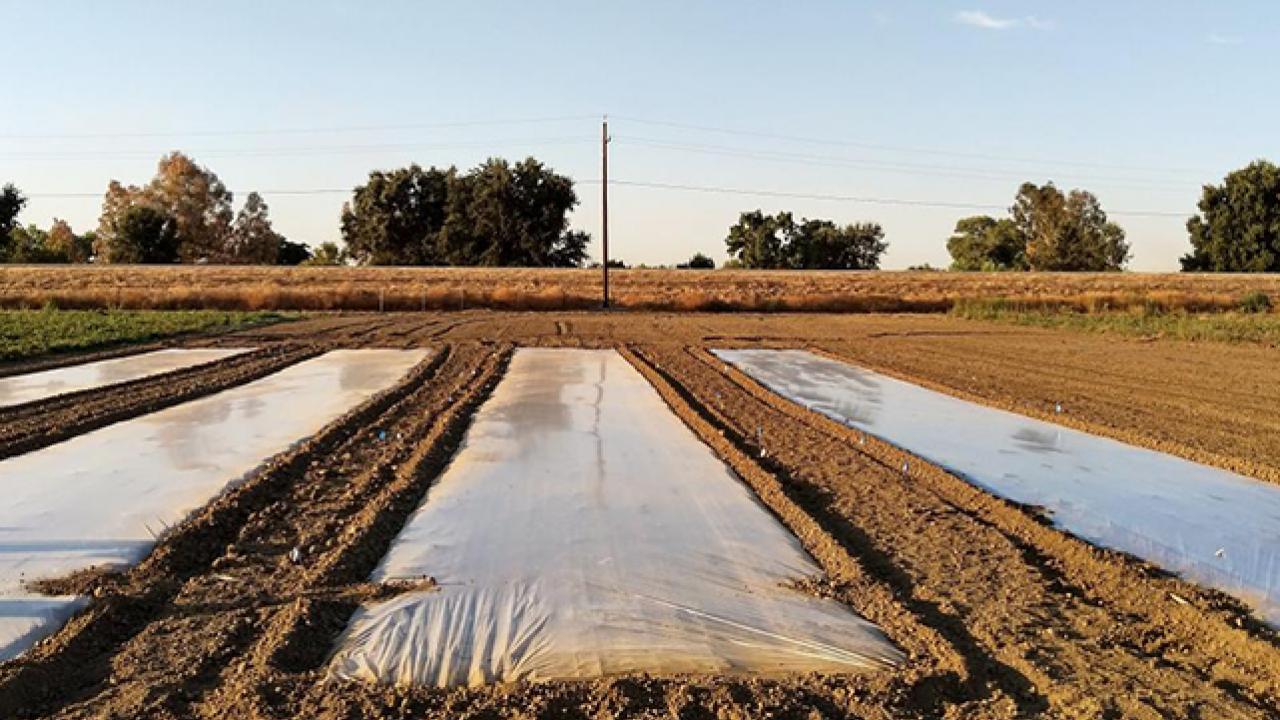
Sustainable alternatives to pesticides: reducing toxic exposure and increasing soil health
This article originally appeared on the Western Center for Agricultural Health and Safety website.
Soil fumigants are a class of pesticides used to control soil-borne pests, such as nematodes and pathogens, and are commonly applied in the fall after harvest or in the spring as a pre-plant soil preparation in a number of major California specialty crops. However, many conventional and widely used soil fumigants, such as chloropicrin and 1,3-dichloropropene, have been identified as toxic and/or possibly carcinogenic.
A key characteristic of common fumigants is their ability to move freely in the atmosphere over great distances as gases. Despite mandated protective equipment, application methods, and access restrictions, exposure risks remain for agricultural workers and communities near fumigation sites. Acute and chronic exposure risks may include irritation to the eyes, skin, and respiratory system, as well as nausea, vomiting, increased risk of certain cancers, and in extreme cases, death.
Human safety, in addition to environmental health and financial practicality, remain central when exploring sustainable agriculture. The widespread use of soil fumigants—combined with their safety risks and expenditures—has created a need for safe and effective alternatives.
What is Biosolarization and How Does It Work?
Instead of toxic conventional pesticides, biosolarization uses solar heating and microbial activity to create soil conditions that are lethal to many pests, but safe for humans.
Steps:
- Spread a biodegradable organic matter amendment on the soil (e.g. rice bran, mustard meal, or certain food processing residues such as almond hulls and shells or tomato skins and seeds). Usually, around 9 tons per acre will suffice.
- Incorporate it into the soil down to 6-12 inches.
- Smooth the soil surface.
- Lay drip line or tape.
- Cover with clear, plastic tarp and bury the tarp edges to trap the heat from the sun in the soil.
- Irrigate the soil to activate the soil microorganisms.
- Keep the tarps on for 1 to 2 weeks during the warm summer months.
- Remove tarps and allow the soil to stabilize for at least 2 weeks before planting.
The organic matter amendments encourage rapid growth of natural biopesticides and other pest-inactivating conditions that temporarily reduce oxygen levels in the soil while producing organic acids from fermentation. While these acids may be deadly for pests, they are generally far less toxic than conventional fumigants, which benefits agricultural workers, neighboring communities, and the environment.
Increased Soil Health and Carbon Sequestration
Initial field trials in almond orchards demonstrated control of soil pests immediately following biosolarization. Ongoing monitoring of these field sites has shown long-term benefits to soil health including persistent pest suppression and elevated plant nutrient content.
Adding organic biomass into soil as part of biosolarization can lead to carbon sequestration in the soil. Additionally, the life cycle assessment showed that, under certain conditions, using food processing waste for biosolarization can reduce the overall greenhouse emissions associated with soil disinfestation and management of food processing wastes.
Financial Practicality
The economics of biosolarization are nuanced and depend on the location, access to low cost amendments, existing field infrastructure, and other factors. In certain situations, biosolarization can be cost competitive with fumigation. However, if the increases in soil health and human health that are unique to this process are considered, the cost-benefit should not be underestimated.
Conclusion
Biosolarization is an effective alternative to soil fumigation that reduces toxic exposures for agricultural workers and neighboring communities, increases soil health and carbon sequestration, and reduces greenhouse emissions by reusing food processing wastes. While many factors affect the cost and effectiveness of biosolarization, the benefits to human health and the health of the environment are invaluable.
For more information and to learn if biosolarization could work on your farm, contact Christopher Simmons, PhD, at cwsimmons@ucdavis.edu.
